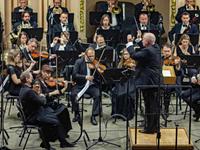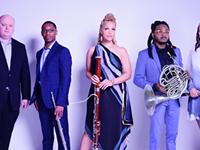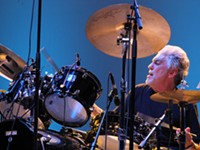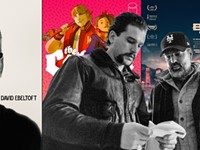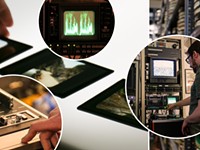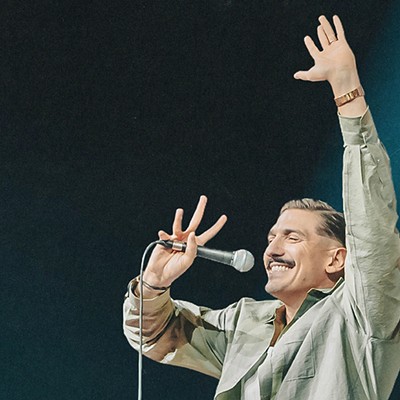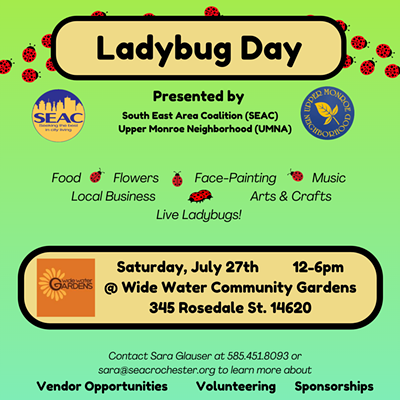INTERVIEW: Award-winning illustrator P. Craig Russell
The legendary artist speaks on his work, and his involvement in ESM's Debussy festival
By Rebecca Rafferty @rsrafferty[
{
"name": "500x250 Ad",
"insertPoint": "5",
"component": "15667920",
"parentWrapperClass": "",
"requiredCountToDisplay": "1"
}
]
As part of the Eastman School of Music's month-long celebration of the music of composer Claude Debussy, ESM will present a free performance of "Pelléas Redux" Friday, October 26, at 8 p.m. at Kodak Hall in Eastman Theatre. A theatrical presentation of Maurice Maeterlinck's love-triangle-laden tragic play, “Pelléas & Mélisande,” featuring music from Debussy's operatic adaptation, the show will also include illustrations from the comic-book adaptation of the story by P. Craig Russell. The concert will be led by ESM music-theory professor Matthew Brown, and Russell's illustrations have been transformed into a motion comic for the event through the use of various digital techniques.
P. Craig Russell is a comic-book writer, artist, and illustrator known for his romantic, Art Nouveau-esque style. He has won both Harvey and Eisner awards, and is extremely well regarded for his work on “Amazing Adventures,” “Elric,” “The Sandman,” as well as his ongoing series of comic book adaptations of operas and literature. Russell is in town visiting Rochester for the first time for the presentation of "Pelleas Redux." City spoke with Russell prior to his visit about his work, the upcoming ESM collaboration, and the comic-book world's shift into the digital age. The following is an edited transcript of that interview.
CITY: How did you become interested in creating comic versions of epic operas?
P. CRAIG RUSSELL: Well, I’ve been an opera fan since I was a kid, so I was familiar with the music. But mostly I was just looking for a good story to tell, outside of the mainstream superhero Marvel comic sort of genre, which is where I started as a professional. When the opportunity came up to do comics outside of the mainstream, and with the opening up of so-called ground-level comics in the late 70’s, it was just sort of a natural fit.
How do you choose the particular stories?
It has to be a good story. There are a lot of great operas that have somewhat silly stories that I don’t think would be interesting graphic novels, so it would have to be something that has a good libretto to begin with. Not just great music, because the music isn’t going to translate into a visual form -- certainly not a soundless visual form. So most of my operas also have great librettos, [such as those] by Maurice Maeterlinck, Oscar Wilde, things like that. Or Wagner’s own libretto for "The Ring of the Nibelung."
What about “Pelléas et Mélisande,” or Debussy in particular, interested you?
Well, that was the first one I did after “Parcifal,” and “Parcifal” had been written for me as sort of a prose treatment by a friend of mine, Patrick Mason. “Pelleas” was the first one I chose, and I chose that entirely because of the libretto. I was somewhat familiar with the music, and certainly loved Debussy, but did not know the opera all that well. Most of what I took from it was Maeterlinck’s original play, although I did listen to the opera and it did influence some scenes, in how I presented it. But I just thought the dialogue between the characters was so brilliant, so affecting, that I just jumped at the chance to do it.
The comic book industry is collaborative by nature, but can you discuss how creating a comic adapted from opera differs from other adaptations you’ve done, such as Oscar Wilde’s fairy tales, or even illustrating stories written by living writers such as Neil Gaiman?
I try to do as much as I can, be in control of as many aspects of a piece of work as I can, whether it’s an adaptation from a play, an opera, a short story, or a novel. I think I pretty much approach them all the same. I’m taking a literary form and a finding visual structure, a visual way of presenting the story. So there’s not too much difference from one to another.
Although, one difference in adapting an opera or a play from a novel is that in the opera or play, it’s all dialogue. There are stage directions, but the story is told entirely with words, with dialogue between the characters. Where in a short story or a novel, you have a lot of descriptive writing, a lot of sections that simply describe what you’re seeing. The author can describe a person’s internal state, what they’re thinking or what their position in society is, which is much more difficult to do in a play, where you have the people talk to each other. I find that a play or opera is in a way easier to adapt because it’s all told through this dialogue and action. The book -- you just have a lot more decisions to make as to what to leave in, what to take out. There is just a lot more sculpting going on with a novel than with a play or an opera.
You’ve said these works were adapted from the theatrical scripts, but you also listen to the music while you are creating the illustrations. Can you talk a bit more about the musical composition and how that’s taken into account?
With "Pelléas & Mélisande," there was a little bit I took from the music, but not much. My next one was "Salomé," and that was working with Oscar Wilde’s words, but I am a crazy Strauss fan, so I was listening to the opera a lot, and that influenced my adaptation. In a sense, it’s almost an adaptation of an adaptation, because Strauss is doing an adaptation of the stage play. Listening to some of his musical solutions influenced how I dramatized my adaptation. There were certain musical sounds, like when Salomé looks into the cistern where John the Baptist is, the music gets black; it just gets so dark. He created the effect of taking the audience down into the cistern with this black sound. That influenced me in a way -- I actually did the same thing, I took us down into the cistern to a point where the panel was pitch black, and reversed the camera so we’re looking up through the grating at Salomé, as if we’re John the Baptist in the cistern.
What sort of inspiration or visual research do you do for illustrations? For example, do you use models, or look at the photos from the original productions where they’re available?
I never look at original production photos. I don’t want to be influenced by another artist’s interpretation. Of course, I’ve seen many of them in books and such over the years -- stage sets of different productions and all that -- I’m not unaware of it, but I try to do something as original as I can, I try to have an authentic personal response to it that’s different in some way from everything else that’s been done.
The other half of your question, about models -- yes. I rope all of my friends in sooner or later, into acting out bits and parts. I don’t have them in costumes ever, I just sort of approximate something I want, then make the rest up as I’m drawing. But to get the consistency of facial design and such, I’ve had friends that I’ve been using over a 35-year period. It’s kind of like having a photo album of them…I have friends that are aging in my comics.
How did this particular project with the Eastman School of Music get started?
Matthew Brown approached me through email, and introduced himself, and talked about the project they were doing, was I interested in it. I thought the project was fascinating. I haven’t seen what they’ve done yet, but I’m looking forward to seeing this constant stream of images while the music is being played. In Utrecht they did a concert performance of "Cavalleria Rusticana" and they used my adaptation above the orchestra. They were projecting my illustrations. It can be an interesting way to present it. Something new for the audience, and a new way to approach it.
I think the way Eastman is using my pictures is much more complex than the earlier one. It’s about a 60-page adaptation, and I think they’re using almost every single image. I’ve had no input into the way they’re handling this, so I’m very interested to see how it’s going to turn out. I feel confident in it because I know how much work they’re putting into this, into the chamber score, the rehearsals, and I know from the piece [Brown] showed me, it seems to be quite labor intensive. They seem so intent in what they’re doing, I feel confident it’s going to look good.
Will there by other such projects in the future, if others approach you for theatrical pairings of music and your illustrations?
I would love there to be. I think "The Ring" is a natural, but it’s so enormous. I think "Salomé" would be easily turned into an adaptation; it’s a shorter opera, shorter than "Pelléas." I’ve also done adaptations of "Cavalleria Rusticana" and "Pagliacci," and I think those would both translate well.
Do you have plans to continue to adapt operatic theater into comic book form?
I have a lot of projects lined up, not operatic. I have the next several years accounted for. But I do want to do one more. I’m not sure why, but I settled on the number 12 years ago. I’ve done 11, that leaves one to go.
What shifts have you seen in your work throughout your career?
It’s more of a constant evolution, where you don’t notice it from one month to the next or one year to the next. But you look at your work from 10 years or 20 years ago and the style is different. You can look at it and say, Well, this is what decade this is from.
What do you see happening in the future of comics, with regards to the digital age? For example, digital versions at the same time of print releases.
If it can in any way work in such a way that artists can produce work and make enough profits to live on, and not be killed by all of the piracy that’s going on, that’ll be a good thing. Now, I understand that everyone who is illegally downloading something wouldn’t necessarily buy your book, if this wasn’t available. It’s just that if there’s a chance to get it for free, they will. So it’s hard to say how many sales you’ve lost.
It’s a new world. I’m still doing things pretty much in the old-fashioned way with pen and pencil and paper. There are cartoonists who just do their work digitally now, and there’s no hard copy at all. I’m doing an adaptation of Neil Gaiman’s "The Graveyard Book" right now, and I’ve done the script and layouts for the entire book on regular old sheets of paper, and it’s all been hand lettered, and will be given to seven other artists who will do the finished artwork over my layouts. But one artist, Michael Golden, who is doing the last story in the book, is doing it entirely on a computer. He’ll just scan in those pages that have the lettering on them, and however he does it, he’ll have done it, but there will be no hard copy of that one story out of the entire book.
There’s a lot of excited or panicked talk, depending on where you’re coming from, of print media disappearing over the next few decades. There’s a big shift already in literature into eBooks. Do you think there is a threat of comics ever not existing in the physical realm, or will their collectable nature as art objects save them?
I couldn’t really say. I hope so. I do know in animation there are no longer any animation cells, which is really sad. Collectors would get individual cells from the films. Now you can get prints of them, but that physical part is really gone. It’s not quite the same as books. I would imagine the mainstream companies would be just fine with it being all digital. I just did a short story for DC Comics and my new scanner isn’t compatible with my computer, so I had to send in the original to DC in New York City -- the old-fashioned way, through the mail -- for them to scan it at their office, and the editor said there were some young people who were so excited -- they’d never seen original artwork.
When I started back in the 70's, I was working on a book for Marvel for a couple of years which eventually was cancelled because its sales were low -- the sales were about 75,000 copies an issue. That at the time was considered low. Today we would kill for a 75,000 print run. I think because of computer games and all of that, the sales have dropped significantly over the decades. At the same time it’s opened up in other directions. Major publishers are getting more into graphic novels, and it’s going more in the direction of single volumes rather than these single periodical pamphlets you get at the newsstand.
Would you say then that video games and new media were a greater threat to the comics industry than comics transferring into the digital realm?
Yes, because it was happening before comics entered the digital age. I think the general consensus is that audience found the superhero sword-and-sorcery was more exciting and more fulfilling in the digital gaming arena than just reading a comic book.
Would you consider doing illustrating for video games?
Yes, I think a lot of it is the subject matter I do -- fantasy, sword and sorcery and all of that. They’re all equally valid artistic outlets, they’re all interrelated. I don’t see it as the enemy, it’s just a natural sort of evolution.
To see more work by P. Craig Russell visit his website.
Speaking of...
Latest in Art
More by Rebecca Rafferty
-

Beyond folklore
Apr 4, 2024 -

Partnership perks: Public Provisions @ Flour City Bread
Feb 24, 2024 -

Raison d’Art
Feb 19, 2024 - More »


